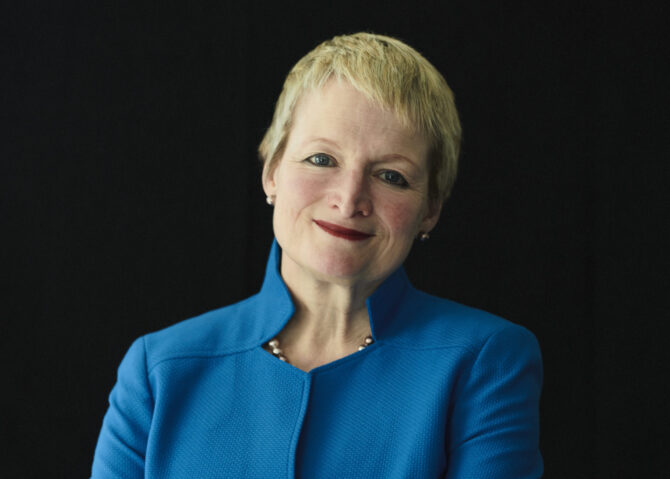To navigate the transition to an ESG world, leaders need to step up.
Over the last decade, the rise of ESG up the business agenda has been nothing short of incredible. Business engagement on all things ESG keeps accelerating – and for good reason. ESG is an essential part of the answer to the crises facing our world today, from looming climate and ecological disasters, to the urgent demands for greater social justice and equity revealed by campaigns such as #MeToo and #BlackLivesMatter.
Despite the emergence of some criticism and pushback, especially in the US, it seems clear that ESG is here to stay. Today, 90% of S&P companies publish ESG reports. ESG commands ever-bigger sums of money, too: between 2018 and 2021, there has been a 15-times growth in the amount of money invested in sustainable funds. Bloomberg expects global ESG assets to reach $50 trillion by 2025.
Leaders need to understand what lies behind the ESG surge and how it will impact their business. Six key ideas should shape how leaders adapt to an ESG world – and drive change from the top.
The rise of ESG
At its heart, ESG has captured a simple idea. Business has an essential role to play in solving many of the social and environmental problems we face. To make an impact, organizations not only need to develop a holistic view of the ESG risks they face – a process that is likely to make them more resilient in the face of unforeseen hardships – but a positive vision of how they can draw on their purpose to deliver positive social impact.
Many forces have contributed to ESG’s fast-growing influence. Campaigners have revealed a groundswell of support for businesses to do more on diversity, equity and inclusion, and to adopt fair employment practices. A new generation of consumers assesses the sustainability of products before buying. In the labor market, employees increasingly consider company purpose when deciding where to work. Governments are pushing to reduce the harms caused by business and are ramping up the pressure for rapid action on urgent challenges such as decarbonization. And of course, investors are using ESG metrics to guide capital flows, as a growing body of evidence has revealed how companies that do well on ESG do well for shareholders: top-performers in ESG ratings enjoy around 15% higher valuation multiples.
For example, Larry Fink, BlackRock chief executive, argued in a landmark letter in 2019 that purpose and profit are inextricably linked and that a “commitment to a long-term approach is more important than ever”. Then in 2020, he wrote that because markets pull future risk forward, “we will see changes in capital allocation more quickly than we see changes to the climate itself.” In other words, Fink was saying: put in place a robust net zero plan or your business’s capital will dry up.
In a world where political, social and market forces are driving a convergence of the seemingly-conflicting objectives of doing good for the world and good for shareholders, adopting a more thoughtful ESG approach is a no-brainer. The challenge can appear overwhelming, though. How do you start an ESG transformation?
The classic approach would be to develop a solid strategy, set SMART initiatives, and then put in place the execution infrastructure needed to drive change. But we challenge you to think through a different lens: put your talent at the center of the transformation.
Six core beliefs for ESG transformation
At Duke CE, we have six core beliefs that should guide the design of capability-building programs supporting an ESG transformation.
1 Start with the power of purpose – from the top
The board, chief executive and other C-suite executives need to lead the change with full commitment, ensuring alignment with the organization’s purpose. Tapping into the power of purpose is central to leading change from the top. Senior leaders also have to be ‘ESG-smart’, capable of engaging in meaningful conversations about topics as challenging as purpose, diversity, equity and inclusion and the net zero transition.
2 Empower managers to lead
Senior and middle managers need a strong mastery of the core ESG topics that relate to their roles and, critically, the ability to influence others. Logical arguments might convince managers of the need for change, but they will need to deploy a range of influencing techniques to persuade the wider workforce to change behaviors.
3 Address the underlying mindsets
To achieve sustainable changes in behaviors, your capability-building program must identify the critical mindsets that need to change. This requires carefully designed interventions to understand the fears and beliefs behind certain behaviors, so that targeted interventions can be put in place to address them, bottom-up.
4 Get to the bottom
Studies have shown that the chances of achieving lasting cultural change increase exponentially when at least 30% of the workforce is exposed to the change in question. If you’re leading a 100,000-strong organization, innovative interventions need to be designed to rapidly onboard 30,000 employees.
5 Let impact be your north star
The success of an ESG capability-building program should be measured by its impact – and to make an impact, your talent should follow the ‘learn, experience and act’ framework. Start with learning, to acquire essential knowledge. Follow with experiences, ideally gained through immersive activities, to trigger the emotions that facilitate mindset shifts. Finally, focus on practical tools and encourage a bias to action to ensure that what is learned generates tangible impact.
6 Champion collaboration
An ESG world demands a more pro-active approach to collaboration where all stakeholders sit down to creatively find new ways of doing well by doing good. Take carbon emissions. Firms making net zero pledges are starting to realize the importance of exploring the implications of decarbonization with their suppliers, and helping those suppliers to likewise decarbonize their operations. “Your emissions are my emissions,” is the mindset. Collaboration is a must.
Launching the ESG Leadership Academy
At Duke CE we are stepping up to the challenge to help strengthen the connections between business and society through a new offering: the ESG Leadership Academy. We know that making the transition to an ESG world is only possible with a strong top-down approach that builds on foundations of exceptional leadership and a commitment to unlocking the power of purpose.
The ESG Leadership Academy is based on a clear vision: developing leaders to creatively align value with values to shape a sustainable future. Designed around the six principles above, it encompasses a variety of customizable delivery methods across the learn, experience and act framework, with a strong emphasis on developing the skills to lead the ESG transformation. We look forward to working with forward-thinking companies to help them meet their ESG challenges – and deliver good for societies around the world.
Sharmla Chetty is chief executive and Andrés Saint-Jean is global head of ESG Leadership Academy at Duke Corporate Education.



